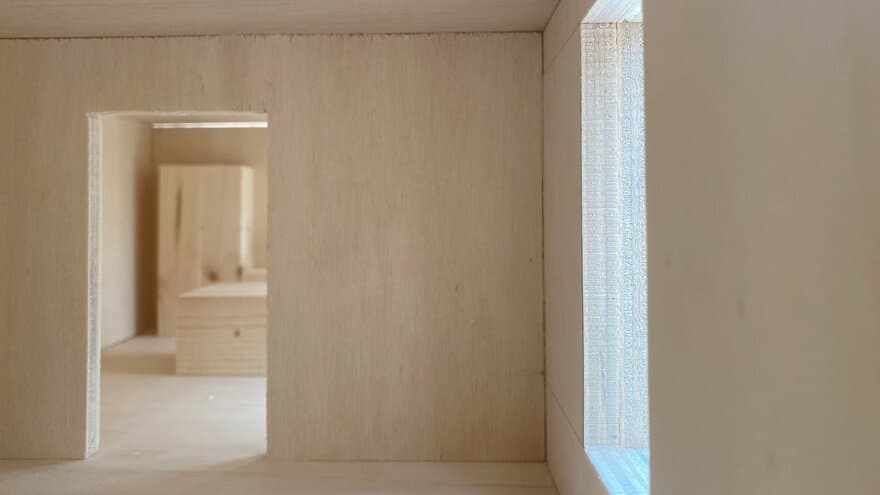About the group
Sufficient quantity and quality of daylight are important factors for human well-being. Daylight has both non-visual effects on humans by being a crucial part of regulating our circadian rhythm, thus affecting stress levels, sleep, mood, eating patterns, and more. However, daylight is also an essential aspect of our visual perception of buildings, and in many cases, architecture and daylight in a room are two sides of the same coin.
The fact that humans spend most of their time indoors, along with the significance of both the visual and non-visual effects of daylight, sets the backdrop for our research focus on daylight.

Model of building in daylight Photo: Thomas Gamst Kristiansen We focus on the indoor daylight conditions within the building, where we research ways to quantify and calculate it, its interaction with the building form, and how it affects the perception of space. We also focus on the daylight conditions around the building, emphasizing how analyses of daylight access to the building envelope and outdoor areas can be used as indicators of outdoor area quality, as well as the potential to create spaces within the façade that have good daylight conditions. Furthermore, of special interest for us are early indicators of daylight, which may be relevant for evaluating competition proposals and/or as requirements in contract agreements.
We employ both digital and analog approaches to daylight, as these tend to supplement each other in a good manner.
Thus, we at NMBU, possess both calculation tools to assess daylight inside and outside buildings, as well as a laboratory where daylight conditions can be studied using scale models. Both methods are suitable for evaluating daylight conditions and have their advantages and disadvantages. Digital models are an efficient way to calculate for different geometries and provide precise results, but there is a relatively high threshold for both execution and understanding of the results. Working with daylight conditions in scale models provides a more intuitive understanding of daylight, which can also be documented with images and measurements. The scale models are tested in an overcast sky simulator, which simulates typical cloudy conditions similar to those used in assessing daylight conditions according to most building codes. In the simulator, daylight conditions inside and around the scale models can be experienced and quantified with different materials and designs in a simple and intuitive manner. Access to and use of the overcast light simulator by external parties can be arranged through the research group's contact person.
The research group possesses instruments for measuring daylight conditions, spectral conditions, and contrasts, which are used both in teaching and in our research.
